I further developed tinting the Residuals #1 charcoal drawings but now using watercolour paints instead of pencil colouring. It produced a temporary installation, research and thoughts of future work.
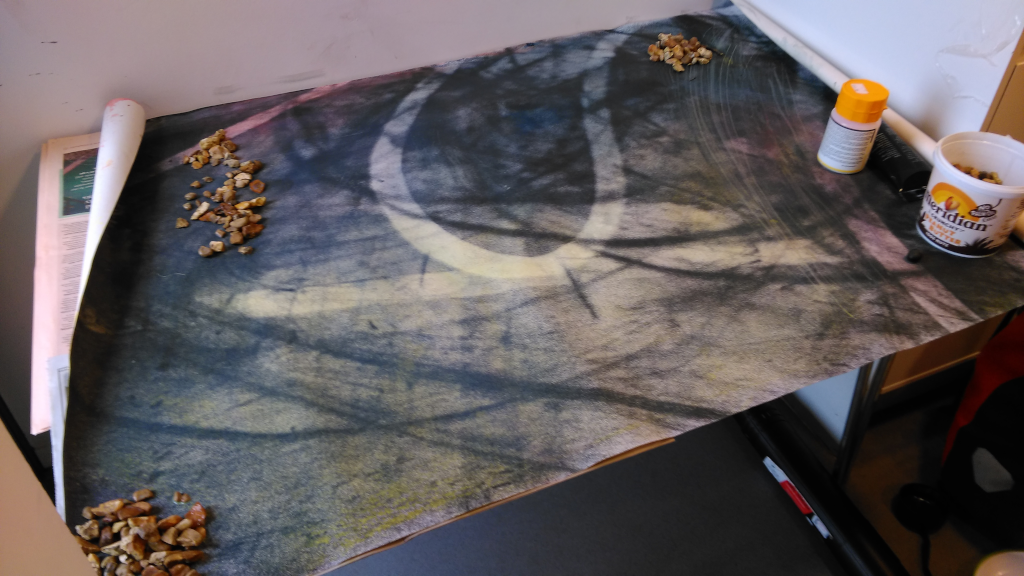
Previously, I’d produced black and white photographs of the surface of the Residuals #1 charcoal drawing. I’d photocopied those which I liked, and tinted them with colour pencils. Now I wanted to try watercolours to tint, on a enlarged image.
A black and white print was made on a wide paper by a commercial printer on part of Residuals #1. The paper which they used, was sold as a wallpaper (118mm wide). But I’d not appreciated that it wasn’t paper! It had a vinyl surface and a paper backing. The water-based paint didn’t take to the surface as vinyl is impermeable to water. (The wallpaper was MURALIN | Muramour® Lin paper backed vinyl wallcovering, 300gsm.)
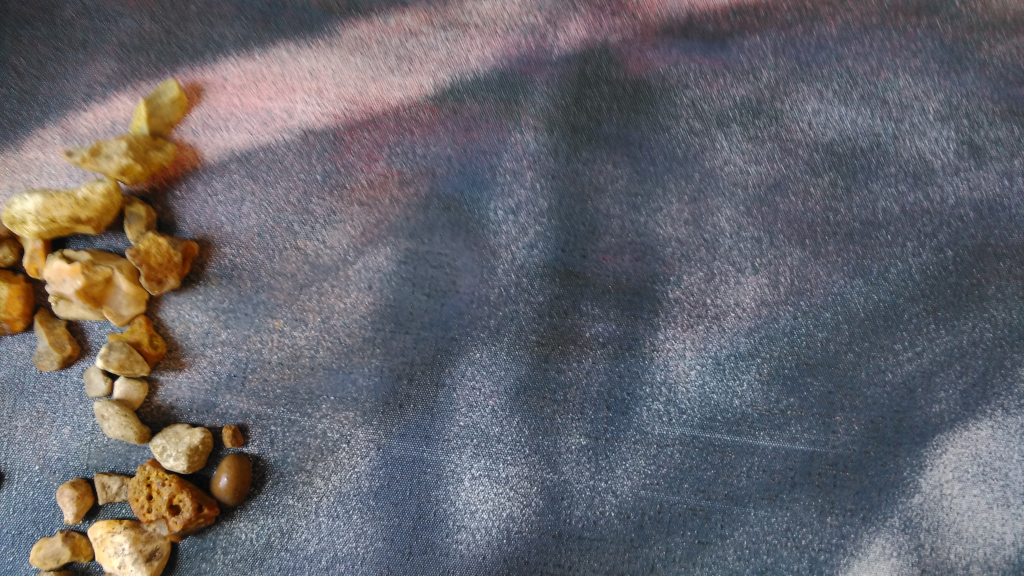
There was some adhesion of the paint to the vinyl surface as I added an acrylic gesso to the watercolour and this retained it on the surface. But the qualities weren’t as I expected. Indeed, the black on the photographed and printed image produced by the printer, wasn’t very saturated – not as much as I’d wanted.
Stones
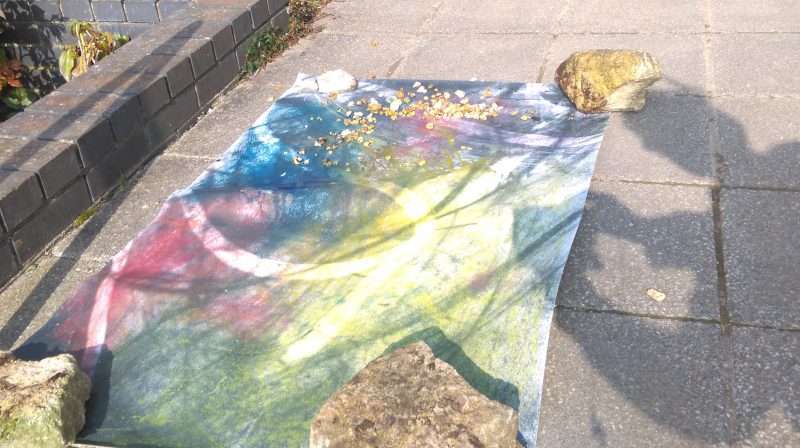
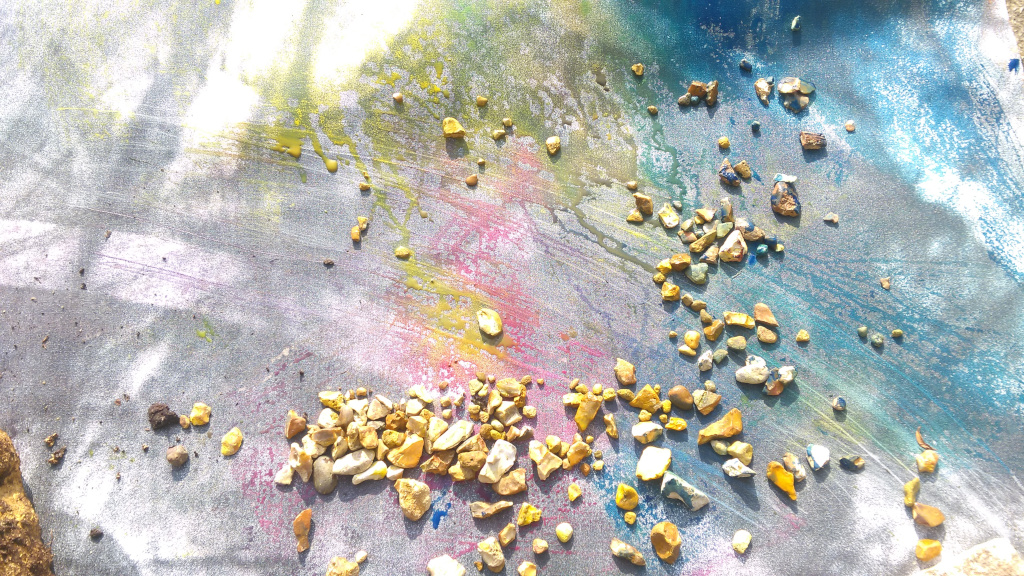
Nevertheless, I persevered with the materials. The resultant painting was taken outside the Beckley Community Centre where I was working, and weighted with stones. It was sunny and windy. I liked the result – an image with stones on its surface: an installation.
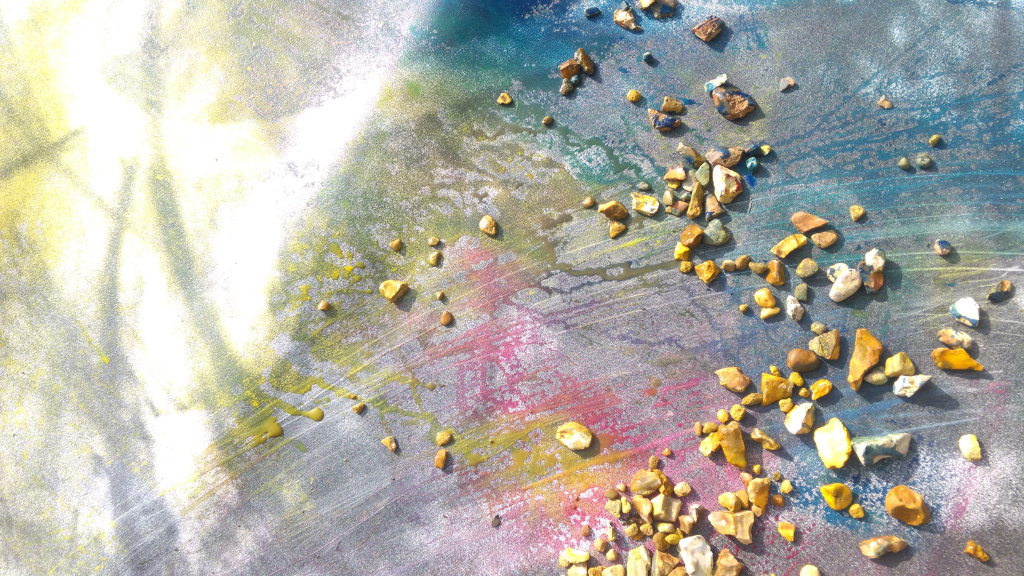
The stones – mostly pebbles from the community centre car park – seemed appropriate as it was watercolour and I imagined a stream flowing over it.
Now I’m wondering how the tinted painting might look if it was displayed in an actual stream with water coursing over it. The viewer looking through the water to the image beneath.
